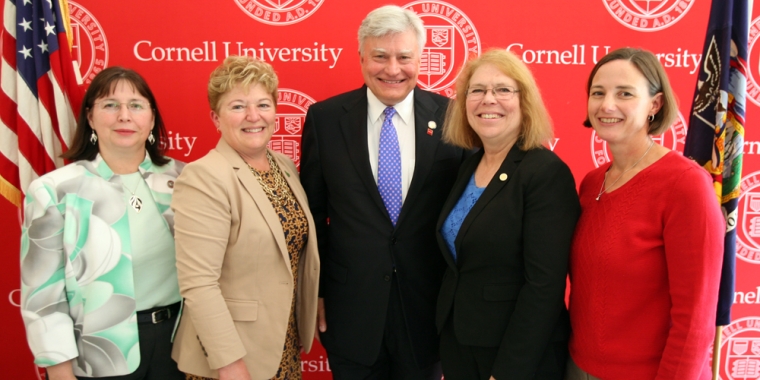
Senator Nozzolio Announces Over $500,000 for Aviation Safety, Security and Economic Development Projects
Michael F. Nozzolio
December 18, 2014
-
ISSUE:
- Transportation
- Air or Airplane
Senator Mike Nozzolio today announced that over $500,000 in State funding is being awarded to three Finger Lakes Region Airports for aviation safety, security and economic development projects.
“Transportation infrastructure investment in the Finger Lakes is vital to our region’s success,” said Senator Nozzolio. “This funding, which will provide crucial upgrades to some of the key airports in the region, will have a positive impact on our economy and tourism here in the Finger Lakes.”
The three airports in Senator Nozzolio’s district receiving State funding are Canandaigua Airport in Canandaigua, Ontario County, which received $525,000 to extend sanitary sewers; Finger Lakes Regional Airport in Seneca Falls, Seneca County, which received $157,500 to purchase snow removal equipment; and Ithaca Tompkins Regional Airport in Lansing, Tompkins County, which received $120,000 to replace the crash, fire and rescue building roof.
In total, the State awarded $9 million to 26 aviation projects through the Aviation Capital Grants Program. These investments will enhance airport safety and security, including taxi-lane striping and markings, runway and airfield maintenance, and installation of automatic weather observation stations. Other airport related improvements that will benefit from this funding include the construction and rehabilitation of new and existing airport terminals and aircraft hangars.
“I was proud to work with the Governor and other State officials to bring this important funding to the Finger Lakes. This infrastructure investment allows us to continue moving our State in the right direction, and take the necessary steps to create a more favorable environment to live, work and raise a family,” concluded Senator Nozzolio.
The funding being allocated was included in the State’s 2014-15 budget. The projects that received the funding were selected through a competitive process and rated on established criteria, including project eligibility, consistency with state aviation plans, regional economic benefits, and the ability to leverage additional investments.


